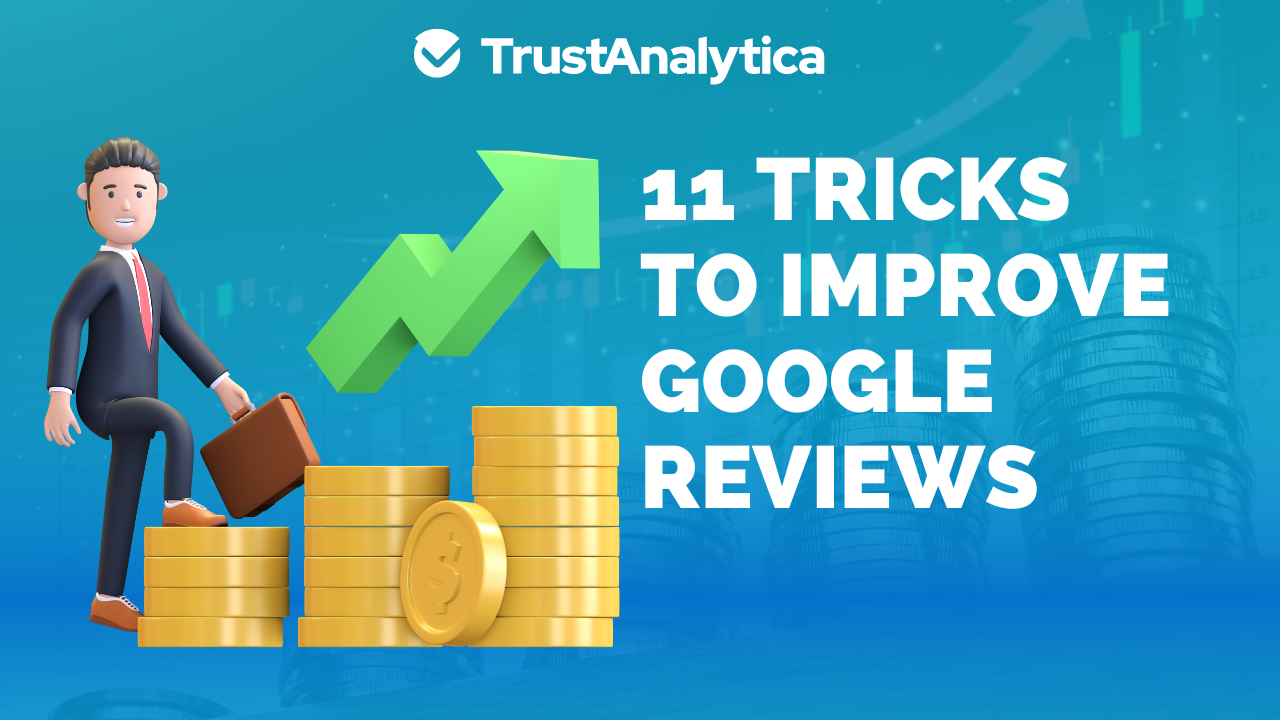With the rise in the quantity of online content, it has become harder for users to know who to trust. They are dependent on a reliable words to know about the world around them, from learning about far-off people and places to making menial decisions such as where to buy groceries from. In such a […]

With the rise in the quantity of online content, it has become harder for users to know who to trust. They are dependent on a reliable words to know about the world around them, from learning about far-off people and places to making menial decisions such as where to buy groceries from.
In such a chaotic situation, we have seen many brands doing extremely well. Both customers and prospects flock around their online profiles and ask questions before buying their products or services. Truth be told, they are more interested in what other people have to say about a brand’s credibility rather than the brand itself.
Google Reviews is a flagship project by Google, the leading search engine by usage in the world. It is attached to the Google My Business platform where businesses can create profiles online and market their business on the search engine.
It is a community-based initiative where brands can receive reviews from customers and the results from those reviews are highlighted across the web so that others can know better about the brand.
Online reputation is the perception of the brand in the virtual world. What people are thinking about and talking about that brand comes in this category. Online reputation management is an active task of monitoring and molding conversations for the benefit of the brand.
Experts have seen the positive connection between dealings of feedback and a brand’s online reputation. It means the brands that take the feedback seriously and act cordially over criticism of customers get the better end of the deal, both online and offline.
Search engines also take cues from Google reviews and reward higher rankings to brands that perform better in this regard
Ultimately, brands accumulate enough goodwill and support from customers and users that the rhetoric around them becomes positive.
Ask any marketer and he will tell you that is it an absolute must in the digital marketing space. It also means that for better and effective online reputation management, brands should allocate time and effort to deal with Google reviews accordingly.

In this section, we will go through some of the benefits that also highlight the importance of Google reviews.
Search Engine Optimization (SEO) is about following the best practices of search engines while creating and uploading content online. Doing so helps brands in climbing the SERPs ladder and get more positive visibility.
In other words, online reputation is also about gaining traction in a positive light and winning the trust of users. In addition to this proactive approach, SEO is also used by ORM professionals to suppress negative and incriminating content.
Surveys have shown that modern users put a lot of trust in peer-generated content. It means instead of paying heed to marketing materials in the shape of owned and sponsored content, they listen to reviews, ratings, and polls conducted by other users.
When you have positive Google reviews stashed and showcased, you can easily influence prospects and get them to become paying customers.
What is necessary is to be casual and not try too hard to “sell” every time.
Apart from hiring services or buying products, users are more interested in brands in terms of employee relations, their stance on social and cultural issues, and so on. This phenomenon can be observed during holidays and cultural days on social media.
So, for brands that are looking to get more positive Google reviews, it is necessary to be hyperactive on different platforms and share with the community at large.
Sometimes, the interaction and the buzz surrounding it generate lead.
There are two common practices in the online world when it comes to SEO and its applications: Black Hat SEO and White Hat SEO. In the former, professionals work around the guidelines and prescriptions of search engines to reap premature rewards. But they cannot sustain that momentum and are punished by search engines resulting in de-indexing of pages and poor rankings.
On the other hand, the results of white hat SEO practices may be slow and trickling in pace, but they are long-lasting and work on the avalanche effect.
This section is dedicated to 11 white hat tricks that businesses and individuals can employ to improve both the quality and quantity of Google reviews.
Many businesses, in their ignorance, forget to set up an online portal at the back end that can help them to collect Google reviews in the first place. In this case, it is a profile on Google My Business.
Most businesses can find their profiles already set up on the platform. If that is the case, the next step would be to claim the profile and add relevant content in the form of multimedia, updated business hours, and so on.
Once this is done and verified by Google, your business can start collecting Google reviews.
Many brands were baffled by the prospect of collecting and improving Google reviews. The reality is that you cannot improve on something if you don’t have it. To collect the Google reviews in the first place, brands just need to ask, in polite but novel ways.
It does not matter the niche and industry of the brand, they need to come up with unique ways to entice users and then ask them to take the step.
Many customers enjoy the service and would not mind leaving a positive review for the brand. What they don’t like is the long path to leaving the review. As a user, you can easily identify with their ordeal.
So, as a brand manager, you can cut down that path by sending them a custom link that can take them to the review page. This way, they get their work cut out for them and it becomes a win-win situation for all.
Of course, reviews are important but they are not that important or even effective when they come from shady sources. Both customers and Google appreciate and acknowledge reviews that come from sources because those reviews are true to their cause.
Customers show extreme distrust toward brands if they find them showcasing paid or fake reviews and Google punished websites by dropping their rankings.
Google My Business and Google Reviews are not the only platforms that can help brands get positive words and benefits in this category. There are other community-based platforms designed for collecting and displaying feedback. These include Yelp, TrustPilot, Trusted Reviews, and so on.
Brands can augment the inflow of Google Reviews by creating and claiming profiles on these platforms and start collecting reviews there.
Companies used to get defensive or even furious upon receiving negative reviews. No matter the quality and quantity of your services, you are always going to receive negative feedback.
Instead of dealing with it poorly, you can consider it as an opportunity to connect with a disgruntled user who can help you to make your brand better. Also, you can turn the tide in your favor by resolving the issues in a public manner.
In addition to custom links, QR codes can also help to improve the overall reception and quality of Google Reviews. Almost all users have smartphones with capabilities to scan and utilize QR codes, from paying for goods and services to even saving information.
That’s why brands can gain much by putting QR codes into action.
Even though the reviews and feedback practice has been taken up by a majority of online users, many still prefer to connect with brands through private chats. They leave reviews and feedback, both positive and negative, through this “one on one” channels.
In the case of a glowing review, you received online, you can ask the customer to post it publicly using either a custom link or a QR code.
Keep in mind you cannot use personal conversation in a public space without asking the permission of other participants first.
Calls to Action or CTAs are excellent tools in copywriting and marketing materials to direct readers and users toward an “action”. There is a complete art and science behind composting and placing CTAs in virtual spaces to get better results.
Your brand can employ this strategy too, by playing with CTAs and asking customers actively to leave Google reviews.
Google reviews, or any other reviews for that matter, do not only come from customers and prospects. There are competitors and collaborators in the same or complementary industries that are often happy to oblige.
But instead of asking them to take the first step, you can review their businesses and leave original reviews to congratulate them on doing the right things and constructive feedback on what can use improvement.
Reviews are as good as the services they are born from. Many businesses always stress collecting and showcasing reviews and seldom pay heed to improve their services or products.
As a no-brainer, the best way to improve Google Reviews is by providing world-class services and satisfying your clients. That way, brands would not have to bother with the arduous process of asking, collecting, and repurposing Google reviews.
Here are some soft guidelines for businesses that are looking to improve the influx of Google reviews:
As such, there is no expiration date on Google reviews. But, those that violate Google’s policies and guidelines are removed from the portal, either after reporting or by the internal editorial process.
No, you do not. Google does not make it mandatory for reviewers to have a Google proprietary email account to leave a review. If bran thinks that this misinformation is stopping their customers to leave reviews, they can educate them on it easily.
Yes, a reviewer can delete or edit a review after posting it online. All he needs to do is go to the portal and find the relevant option in the menu.
Google does not reveal the email accounts of the reviewers to the general public. But the company sees the IP address of the reviewer to judge the authenticity of the feedback. If a reviewer wants to mask his IP, he needs to use a VPN.
As a policy, Google does not show the email IDs of reviewers along with the review. Since all the reviews are public, other users can still read your name and profile picture because Google does not allow anonymous reviews.
Google reviews are at the backbone of any solid online reputation management or marketing campaign. They are the best way for a brand to showcase public trust and good faith in its products and services. There are other feedback portals, but Google reviews offer more core and peripheral value.
In this post, we have shared some useful tricks with brands that will help them in collecting and showcase Google reviews. Keep in mind that no matter the sentiment reviews carry, they can be repurposed to extract the desired effect.
We hope that brand owners and managers will find this guide helpful in climbing the ranks of online reputation and SEO.

